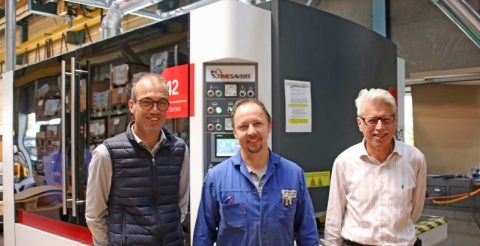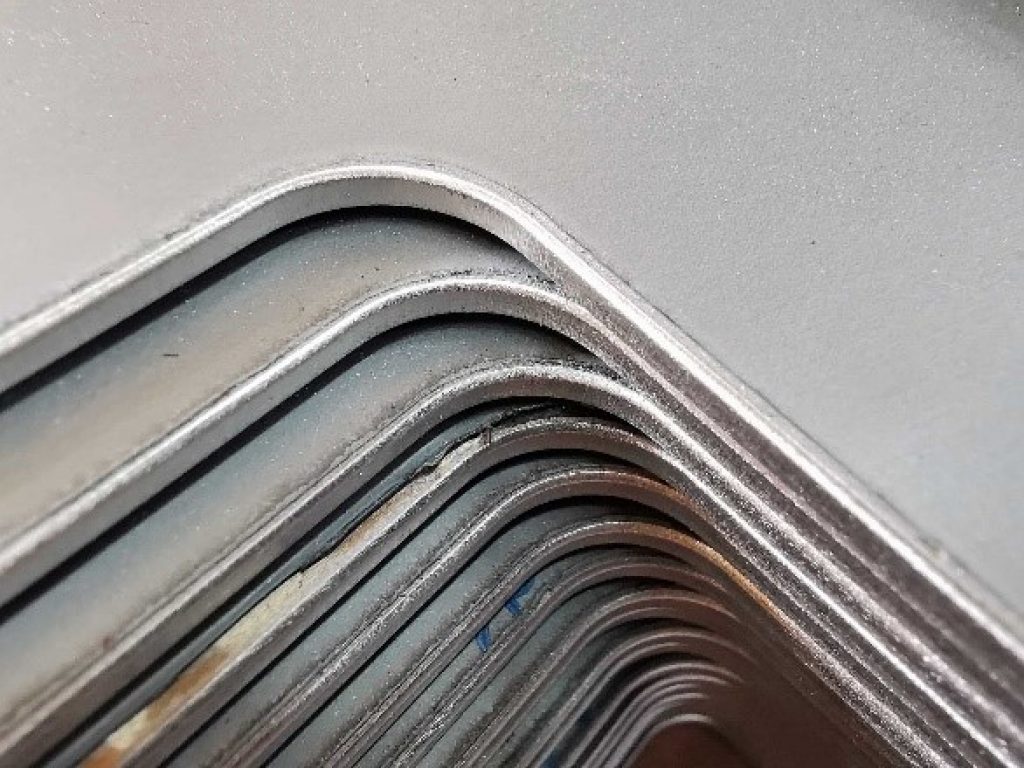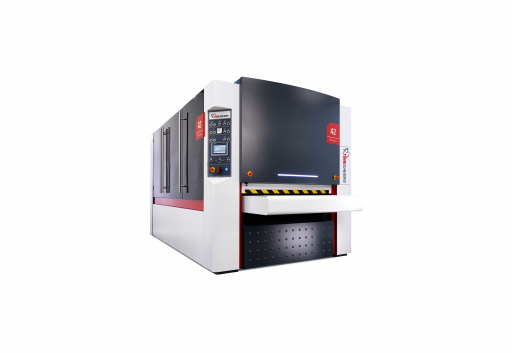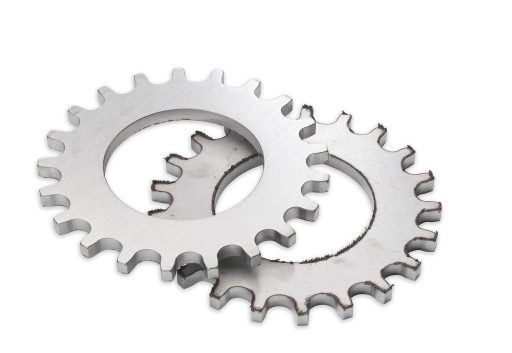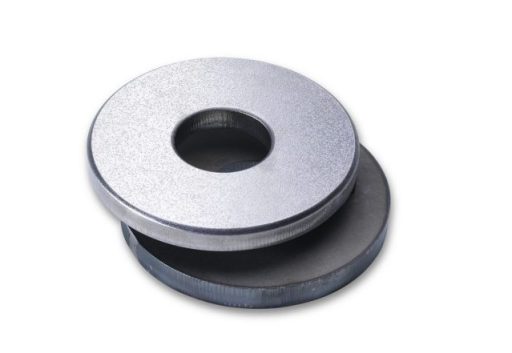The burrs that are formed when cutting, lasering, or punching sheet metal must be removed. In many cases, the surfaces have to be grinded or structured afterwards as well. Customers also increasingly desire defined rounded ages. What experiences does a medium-sized sheet metal company have with a combination system that can be used flexibly to achieve this with a variety of materials?
“As a medium-sized sheet metal working company, our focus is on technically challenging tasks for demanding customers”, explains Guido Dubler, Managing director of Borschberg Käser AG in Wettswill (Switzerland). Instead of only cutting, punching, and bending sheet metal parts based on drawings, the company focuses more and more on the production of assemblies and ready-to-use modules, for instance, housing for control cabinets, machines, vehicle bodies, and such. In doing so, they take on overall responsibility for all parts of the process chain necessary for complete delivery. This saves the customer considerable internal expenses. In the context of joint product development, we contribute our own process competency to the product design, which leads to significant savings in terms of both costs and effort. The company’s own core competency when it comes to processing sheet metal is constantly strengthened by the modernisation of machines and further training of the employees. At the same time when it comes to peripheral activities such as surface coating, one can rely on a network of local, flexible, and trusted suppliers. The service portfolio includes storage, packaging, as well as other logistics services. This is a proven strategy. Customers include many leading businesses, for instance from machine construction, electrical and railway engineering, equipment manufacturing, and traffic technology.
Increasing Demands for Sheet Metal Part Quality
“Naturally, these customers have high standards when it comes to the quality of the products they buy”, adds G. Dubler. This does not only apply to the precision and dimensional accuracy of the sheet metal parts, but also to their look and feel, or that of the assemblies that are created with them. In particular, they focus on surface quality. In addition to no scratches or other surface defects, these customers often require impeccable coating or special surface structures ranging from high gloss to uniform silk matting or structuring. Occupational health and safety are additional concerns. As a sheet metal processor, this puts the focus on technologies used for post-processing after cutting or punching.
Edges as a Defined Quality Characteristic
“In the past, the requirement for sheet metal parts was basically for the edges to be free of burrs”, remembers G. Dubler. This was mostly to prevent damage to surfaces when the parts were stacked, fit errors during assembly, or cut injuries during handling. The other edge characteristics usually did not matter much. The edge processing – if it was done at all – was therefore usually limited to the underside of the sheet metal. For the interiors of housings or control cabinets, this was even skipped entirely. This has changed now. For instance, customers increasingly require edges that are not only free of burrs, but also ‘hand-friendly’ rounded edges, even for the interior parts of housings. There are now more and more specifications that even prescribe the dimensions for double-sided rounding of the edges. With regard to specific coating processes, it is required that edges are free from oxidation, otherwise the galvanisation layer might not form evenly. The sheet metal edge is becoming a more and more defined quality feature.
Requirements for a New System
“When we had to procure a system to replace our ageing surface grinding system in 2018, we approached the matter with great care”, says G. Dubler. Together with George Ulrich, head of production and logistics, and another senior colleague, they formed a workgroup to first define their own requirements. Based on this they then examined the suitability of technologies available on the market.
On the one hand, the focus was on maximum flexibility when it came to applications with steel (carbon), stainless steel, and aluminium in a variety of thicknesses. We also had to be able to reliably meet customer requirements regarding rounded edges. On the other hand, the aim was that the new system had to be easy to use for semi-skilled workers and be able to be converted quickly and safely.
Finally, the system we got had to be able to perform the following tasks, either individually or in combination: grinding of the surface with thorough removal of chips and burrs, defined rounding of edges, and final structuring of the surface by applying a brush effect.
Careful Selection
“These were the criteria we started looking in the market with. We examined the offers of a total of six manufacturers”, says G. Dubler. The number-one priority was the suitability for the defined rounding of edges, followed by flexibility, especially with regard to the quick and easy conversion between working with steel, stainless steel, and aluminium. This required the use of special abrasives as well as a thorough cleaning of the system when converting it. Particular attention was paid to the question of whether it was operated wet or dry. This is relevant because aluminium dust in its dry state carries a significant risk of explosion. However, if the system uses wet grinding, this makes it difficult to remove the grinding dust from the system, and you need to dry parts afterwards. Additionally, there is a risk of staining.
Other criteria were the processing time and risk of parts overheating. In addition of studying manufacturer documents, we also visited colleagues who were working with the systems in question. We conducted test processing with a selection of suitable sample parts at the manufacturers. Of the two suppliers that then remained, Timesavers was awarded the contract. This because their concept was the most convincing.
The Choice for the 42 WRBW from Timesavers
“The Timesavers system has three separate units for specific tasks”, explains G. Dubler. On the front, there is a wide grinding belt, which is used to grind the surfaces to remove both burrs and coatings. Next is a rotating brush unit with a total of eight rollers that also rotate and are covered with sandpaper slats. These do the rounding of the edges. Another grinding belt unit can be covered with fleece to create a structured and silk-matte surface. The deciding factor was the well-thought-out concept. It allows for a quick tool change, while minimising the risk of mistakes. The other features were also in line with Boschberg Käser’s wishes. For instance, the system operates dry, while the dust is continuously extracted and made harmless in a separate wet separator. A few potentiometers are all that is needed to set the operating parameters. Only one employee is required to operate the system. Thanks to the camera and screen, the employee can already see what is going on in the outlet area when the parts are loaded in the machine. This enables them to efficiently divide their time between loading and unloading.
The system has been in use since January of 2019, and according to Mr Dubler, it delivers exactly the results he had been hoping for. In the over 1,000 operating hours (with single-shift operation), there was only a brief servicing at the beginning when a parameter had to be adjusted. The response times of the service department which has three employees based in Switzerland have been satisfactory as well. “Based on the experience so far, I would definitely say that I would choose the Timesavers system again today”, says Guido Dubler.
